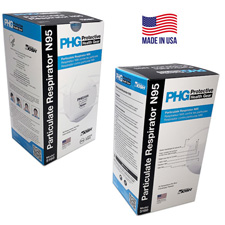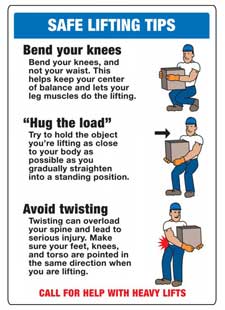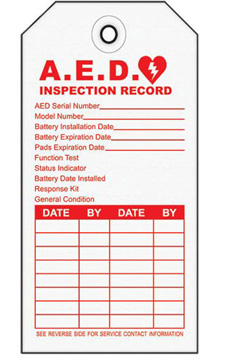| The Home page of ILPI's Safety Data Sheet (SDS) Resource, the leader in SDS information since 1995! | |
| The history and philosophy behind this resource. | |
| A curated collection of books and reference materials concerning Safety Data Sheets and closely related topics. | |
| Paste your plain text SDS into the SDS-Demystifier, and it will be converted into a hypertext-enriched document with links to detailed explanations of each key term. | |
| An extensive list of frequently asked questions about Safety Data Sheets including regulations, content, compliance, and more. | |
| A humorous take on Safety Data Sheet jargon. Fill in the blanks on our entry form to generate a personalized Unsafety Data Sheet to share with your coworkers. | |
| Since 1995, we've maintained this massive curated list of the best places to find Safety Data Sheets on the Internet. | |
| Way more than a glossary, this hypertext-enhanced resource covers hundreds of SDS-related terms and expert knowledge. Each entry includes both the SDS relevance and links to additional authoritative resources. | |
| Archived results of Safety Data Sheet related polls taken by some of our millions of site visitors | |
| You are here! The OSHA regulations behind SDS regulations, including the inspection guidelines and over 400 official interpretations letters under the Hazard Communication Standard | |
| Commercial suppliers of SDS authoring and management software as well as cloud compliance services. | |
| Commercial companies that will create SDS's for your specific needs as well as SDS translation companies. |

Safety signs, banners, and scoreboards? Get yours at Safety Emporium!
| Title: 05/03/2023 - Exclusion of arsenic-treated wood from OSHA's Inorganic Arsenic standard | |
| Record Type: Interpretation | Standard Number: 1910.1018, 1910.1018(a), 1910.1200, 1926.1118, 1926.1126 |
OSHA requirements are set by statute, standards and regulations. Our interpretation letters explain these requirements and how they apply to particular circumstances, but they cannot create additional employer obligations. This letter constitutes OSHA's interpretation of the requirements discussed. Note that our enforcement guidance may be affected by changes to OSHA rules. Also, from time to time we update our guidance in response to new information. To keep apprised of such developments, you can consult OSHA's website at https://www.osha.gov.
May 3, 2023
Maria Gomez
56 County Center Road
White Plains, NY 10607
Dear Ms. Gomez:

Get your PPE such as made in USA NIOSH-approved N95 masks from Safety Emporium.
Thank you for your letters of July 8, 2021, and August 31, 2021, in which you expressed your concerns about the exclusion of arsenic-treated wood from OSHA's Inorganic Arsenic standard, 29 CFR § 1910.1018, and for the additional information you provided for OSHA's review in this matter in February and March 2023. Your letters discussed the brain and nerve damage suffered by your husband, who was diagnosed with arsenic poisoning in 2019, and you stated that he had worked with arsenic-treated wood during his occupation as a carpenter 15 years earlier. You voiced your concern that he and others who work with arsenic-treated wood are not adequately informed about the health effects of exposure to arsenic or the preventive measures they can take. You requested that OSHA rescind the exclusion of arsenic-treated wood from 29 CFR § 1910.1018, so that employers of carpenters and others who work with it would be required to provide them with training and other protections of OSHA's Inorganic Arsenic standard. We appreciate and commend your interest in advocating for OSHA's standard to cover all workers potentially exposed to arsenic in their occupations.
Revision of 29 CFR § 1910.1018 is not currently on the agency's regulatory agenda, available at https://www.osha.gov/laws-regs/unifiedagenda/currentagenda. OSHA is working aggressively on a number of rulemaking initiatives that will have a significant impact on worker safety and health, including rulemakings to address heat injury and illness, workplace violence, and occupational exposure to COVID-19, among others. Given these important rulemaking priorities and OSHA's limited resources, OSHA does not plan to add this topic to the regulatory agenda at this time.
However, you may be interested to know that although the inorganic arsenic standard does not cover arsenic-treated wood, such wood is subject to OSHA's Hazard Communications standard (HCS), 29 CFR § 1910.1200. Exposure to chromated copper arsenate (CCA)-treated wood dust is specifically recognized by OSHA as a hazard to the end user of wood under the HCS, as shown in excerpts from several letters of interpretation issued by OSHA in 1994. Employers of carpenters and others exposed to dust from working with arsenic-treated wood structures are required by the HCS to provide information and training to employees about the health effects of their exposures and about the preventive measures they can take. Furthermore, OSHA recognizes wood dust as a health hazard subject to the requirements of the HCS whether or not it is chemically treated, as shown in the excerpt provided from a letter of interpretation issued by OSHA in 1987. The HCS therefore requires employers to provide information and training to workers exposed to wood dust, whether or not the wood is chemically treated.

Keep your employees healthy and safe with ergonomic signs and posters from Safety Emporium.
As you are aware, most residential use of arsenic-treated wood ended by 2004. Therefore, most exposures to arsenic-treated wood dust likely occur during work on existing residential structures or non-residential construction. The provisions of the HCS most relevant to exposed workers in these cases are its requirements for the employers of exposed workers (rather than the HCS requirements for manufacturers or importers of treated wood products), although manufacturers also have a responsibility to provide warning labels and safety data sheets (SDSs) to downstream users of arsenic-treated wood which may be used in building or modifying some commercial structures. The provisions we think may be of most interest to you, based on the concerns expressed in your letters, are as follows.
- Paragraph 1910.1200(e), Written hazard communication program, requires employers to develop, implement, and maintain at each workplace, a written hazard communication program which (at minimum) describes how the criteria specified in paragraphs (f), (g), and (h) of the HCS for labels and other forms of warning, safety data sheets, and employee information and training will be met. The requirements of paragraphs (f), (g), and (h) which could be relevant to employers of workers exposed to arsenic-treated wood dust are discussed below.
- Paragraph 1910.1200(f), Labels and other forms of warning, applies to shipments of solid wood not exempted as articles due to their downstream use. For such shipments, the manufacturer is required to provide a label to the customer at the time of the initial shipment.
- Paragraph 1910.1200(g), Safety data sheets, requires chemical manufacturers and importers to obtain or develop a safety data sheet (SDS) for each hazardous chemical they produce or import. It requires employers to have an SDS in the workplace for each hazardous chemical which they use. SDSs include information on exposure controls/personal protection and toxicological information.
- Paragraph 1910.1200(h), Employee information and training, requires employers to provide employees with effective information and training on hazardous chemicals in their work area at the time of their initial assignment, and whenever a new chemical hazard the employees have not previously been trained about is introduced into their work area. Employees must be informed of any operations in their work area where hazardous chemicals are present; the location and availability of the employer's written hazard communication program, including the required list(s) of hazardous chemicals present at the worksite and any safety data sheets (SDS) required by this section. Employees must also be informed of the health hazards of the chemicals in the work area and the measures employees can take to protect themselves from these hazards.
In addition, you may be interested to know that OSHA's 2006 rulemaking for hexavalent chromium or Cr(VI)—also a chemical used in certain wood preservatives— did not exclude wood treated with hexavalent chromium from the scope of the hexavalent chromium standard. OSHA's preamble to that final rule stated:
The use of wood treated with pesticides containing Cr(VI) is also covered. In this respect, the Cr(VI) standard differs from OSHA's Inorganic Arsenic standard (29 CFR § 1910.1018)… A number of commenters argued that a similar exception should be included in the final rule for use of wood preserved with Cr(VI) compounds (Exs. 38-208; 38-231; 38-244; 43-28). However, OSHA's exposure profile indicates that work with wood treated with pesticides containing Cr(VI) can involve Cr(VI) exposures above the new PEL (see FEA, Chapter III). OSHA therefore considers a blanket exception from the scope of the final rule for use of wood treated with Cr(VI) to be unjustified. [71 FR 10330, Feb. 28, 2006]

Get your AED signs, tags, and other first aid products from Safety Emporium.
As you are aware, arsenic-treated wood was produced with a pesticide/preservative called chromated copper arsenate (CCA) to prevent rotting in lumber designed for outdoor use. Even though OSHA's arsenic standard does not apply to the use of CCA-treated wood, OSHA's hexavalent chromium standard for construction does apply to the use of CCA-treated wood. The hexavalent chromium standard contains a variety of protections, such as respiratory protection and PPE, which would apply to employees working with CCA-treated wood, depending on the amount of hexavalent chromium exposure involved. The full text of OSHA's hexavalent chromium standard for construction may be viewed online at https://www.ecfr.gov/current/title-29/subtitle-B/chapter-XVII/part-1926/subpart-Z/section-1926.1126.
In summary, exposure to wood dust in general—including, but not limited to, arsenic-treated wood dust—is recognized by OSHA as a hazard to the end user of wood under the HCS. The requirements of the HCS therefore apply when workers are known to be exposed to wood dust, whether or not their employer has reason to expect that the wood dust comes from arsenic-treated wood. Furthermore, when workers are exposed to wood that is known to have been treated with arsenic, their employer must include health hazards specifically associated with arsenic-treated wood in the information and training provided to exposed workers. And, additional protections included in OSHA's hexavalent chromium standard are applicable to workers who are exposed to CCA-treated wood in some circumstances. Although OSHA does not plan to add your requested revision to the scope of the arsenic standard to the regulatory agenda at this time, we hope that the information included in this letter about the protections available to employees who are exposed to arsenic from their work with treated wood is helpful to you.
In closing, we are sorry to hear of your husband's situation, but we commend you for your dedication to worker safety.
Sincerely,
Andrew Levinson, MPH, Director
Directorate of Standards and Guidance
(1)
The following excerpts from several letters of interpretation issued by OSHA in 1994 illustrate that exposure to CCA-treated wood dust is specifically recognized by OSHA as a hazard to the end user of wood under the HCS:

Commercial kitchen safety begins with kitchen safety compliance products from Safety Emporium.
-
Wood and wood products are still exempted from the hazard communication standard if the only hazard presented from use of the product is flammability or combustibility, which are hazards that are well-known among users of wood products. However, it may not be generally known among users that inhalation of certain types of wood dust or chemicals used to treat wood can present a serious lung disease hazard. For this reason, OSHA has always required under the hazard communication standard that distributors of wood products provide [safety data sheets] to employers whose employees may be exposed to these inhalation hazards.
https://www.osha.gov/laws-regs/standardinterpretations/1994-12-05 -
Under the HCS, the manufacturers of CCA pressure-treated lumber are responsible for chemical hazard information ([Safety] Data Sheets, labels, etc.) to be transmitted to downstream employers.
https://www.osha.gov/laws-regs/standardinterpretations/1994-08-31 -
Based on the information that you have provided us, OSHA concludes that labels must be provided on each shipment of treated wood….The HCS necessitates a "downstream flow of information" which means that producers of hazardous chemicals have the primary responsibility for generating and disseminating information, while the users must obtain the information and transmit it to their employees.
https://www.osha.gov/laws-regs/standardinterpretations/1994-11-17
(2)
-
On September 9, 1986, a memo concerning the coverage of wood dust under the HCS was sent to you…. The preamble to the [Hazard Communication Standard], page 31863, published on August 24 [1986] states that OSHA never intended to exclude wood dust from the standard's coverage under wood and wood products. In addition, the preamble states, "wood dust is a recognized health hazard, with exposure limits recommended by the American Conference of Governmental Industrial Hygienists (ACGIH) to control employee exposure to the substance." Under the provisions of the HCS, this means that wood dust is to be considered a hazardous chemical (paragraph (d)(3)(ii), and therefore subject to the requirements of the rule including material safety data sheets and training.
https://www.osha.gov/laws-regs/standardinterpretations/1987-12-07
The original official public domain version of this document is available from OSHA at https://www.osha.gov/laws-regs/standardinterpretations/2023-05-03.